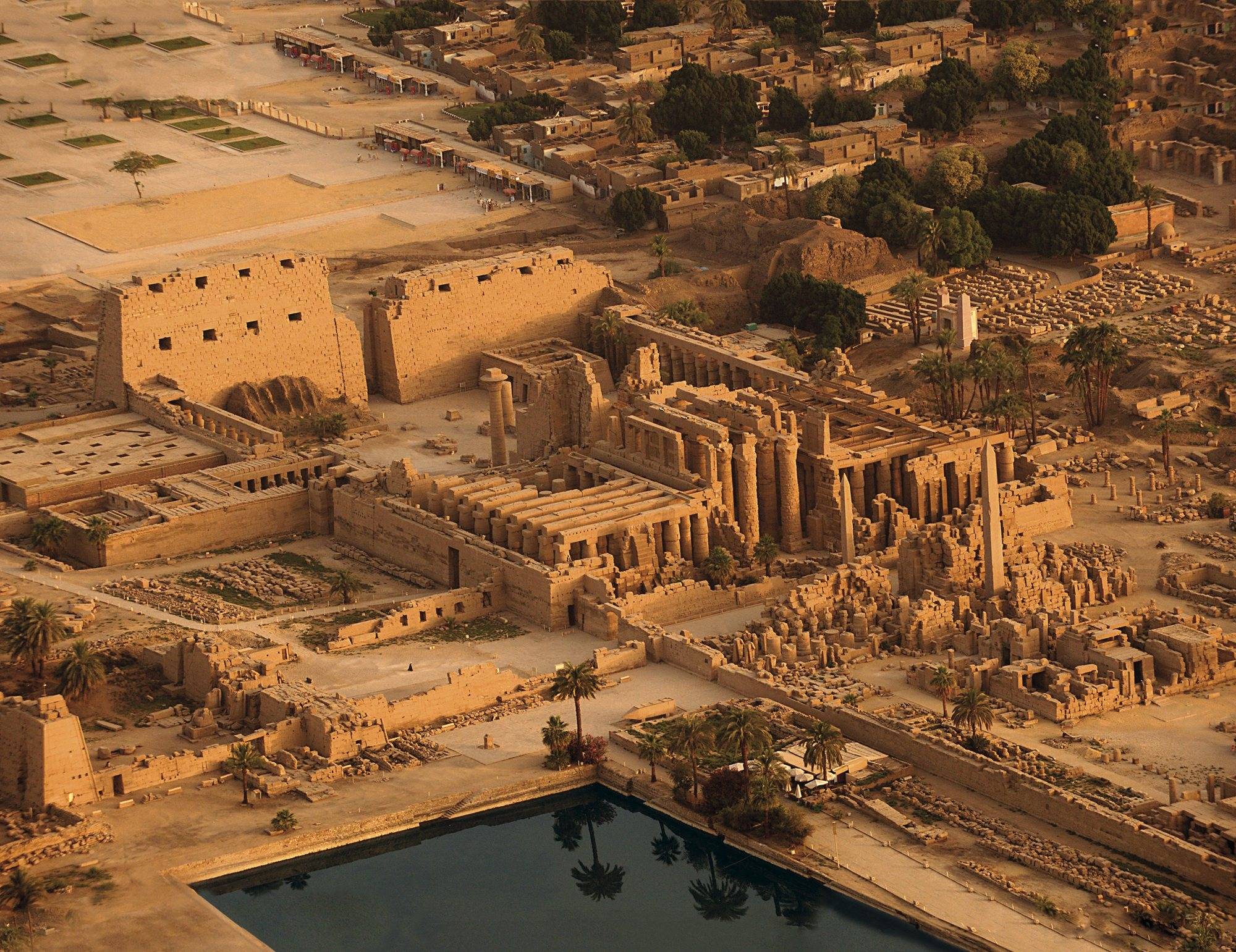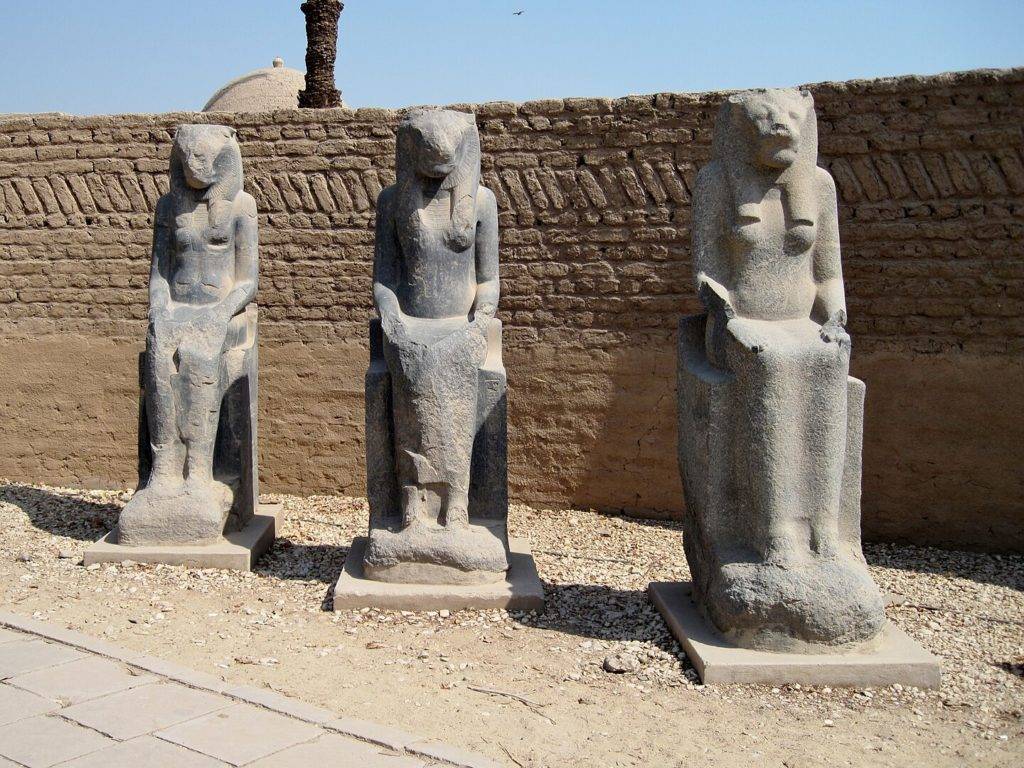Visiting Karnak Temple
Everything You Need to Know
In the heart of Egypt lies a testament to the grandeur of ancient civilization: the Karnak Temple. Its towering pylons, intricate reliefs, and sprawling halls whisper tales of gods, pharaohs, and the enduring spirit of a bygone era. Karnak Temple Complex is a collection of temples, chapels, pylons, and other structures near Luxor, Egypt.


The Karnak complex is a vast open site that includes the Karnak Open Air Museum, known as Ipet-isu in ancient Egyptian, meaning “The Most Select of Places.” Divided into four main parts, and only the largest part is currently accessible to the public. The term “Karnak” usually refers to the Precinct of Amun-Ra, as it’s the only part that most visitors get to see. The other three parts, the Precinct of Mut, the Precinct of Montu, and the dismantled Temple of Amenhotep IV, are not open to the public. Its construction spanned over two millennia, from the Middle Kingdom to the Ptolemaic period, making it one of the largest religious complexes ever built.

The Layout and Design:
Spread across 247 acres, Karnak is a vast labyrinth of temples. Its layout evolved over centuries, with each pharaoh leaving their mark. The main axis runs from the entrance in the east to the sacred precinct in the west, symbolizing the journey of the sun god Ra.

The Temple of Karnak was known as Ipet-isu—or “most select of places”—by the ancient Egyptians
Luxor Tours & Activities
Looking to save some costs on your travel? Why not join a shared group tour to explore Luxor, Egypt? Here are some activities you might be interested in:
karnak Temple Location
Situated near the modern-day Luxor, Karnak Temple stands on the eastern bank of the Nile River. Its strategic location religious and administrative center, connecting Upper and Lower Egypt.

The Precinct of Amun-Re
The Precinct of Amun-Re is situated near Luxor, Egypt, and is one of four temple enclosures that form the immense Karnak Temple. It is the largest temple complex and the only one accessible to the general public.

The site covers an area of 250,000 square meters and comprises many structures and monuments. The Temple of Amun covers an area of 61 acres. Some parts of the complex are under active excavation or restoration, including large parts of the North-South Axis (the 8th, 9th, and 10th pylons).
Most of the southwest corner is an open-air assembly area containing millions of stone fragments, laid out in long rows, awaiting reassembly into their respective monuments. The temples of Khons and Opet lie in this corner and are open to the public.


First Pylon:
The temple complex has ten pylons built by different Pharaohs. The first pylon is the entrance to the Amun-Re precinct with an avenue of sphinxes. The current pylon, started in the 30th dynasty, was never fully completed. It’s 113m wide and 15m thick, with piles of mud bricks inside. Nectanebo I built it, along with the enclosure wall surrounding Karnak. Some scholars think there might have been an earlier pylon on the same site.
The Great Hypostyle Hall:
Step into the awe-inspiring Hypostyle Hall, where towering columns soar towards the heavens. Built by Seti I and completed by his son Ramesses II, this forest of columns creates a mesmerizing play of light and shadow, invoking a sense of reverence and wonder. It covers an area of 50,000 square feet (5,000 square meters) and boasts 134 colossal columns arranged in 16 rows. Out of these columns, 122 are 33 feet (10 meters) tall, while the other 12 are 69 feet (21 meters) tall and have a diameter of over 9.8 feet (3 meters). The architraves, which sit on top of these columns, are estimated to weigh 70 tons.
The Third Pylon:
Beyond the Hypostyle Hall stands the imposing Third Pylon, erected by Amenhotep III. Its massive structure served as a backdrop for grand processions and rituals, emphasizing the temple’s significance as a center of religious authority.

Temple of Khonsu:
Dedicated to the moon god Khonsu, this smaller temple within Karnak’s complex reflects the intricate craftsmanship of ancient artisans. Its elegant columns, decorated ceilings, and intimate courtyards offer a glimpse into the intimate rituals and offerings made to the lunar deity.
Thutmose III Pylon:
The imposing Thutmose III Pylon stands as a testament to the military prowess and religious fervor of one of Egypt’s greatest pharaohs. Decorated with scenes of triumph and divine adoration, it served as a monumental gateway to the inner sanctum of Karnak Temple.
Tuthmosis III Hall:
Enter the grand Tuthmosis III Hall, where monumental statues and towering obelisks pay homage to the pharaoh’s divine mandate. This vast hall, lined with hieroglyphs and reliefs, immortalizes Tuthmosis III’s reign and his enduring legacy as a patron of Karnak Temple.

Sacred Lake:
At the heart of Karnak Temple lies the Sacred Lake, a serene oasis amidst the bustling complex. Fed by channels from the Nile, this lake held great religious significance, symbolizing the primordial waters of creation and providing a source of purification for rituals.
Ramesses III Chapel:
The chapel of Ramesses III is located in the temple precinct and is adorned with vibrant reliefs depicting scenes of royal grandeur and divine favor. The Temple of Rameses III is found on the south side of the forecourt, and inside, the first court lined with Osride statues of the king. The king is depicted slaughtering captives, and the entrance of the shrine fronted by a small pylon adorned with scenes of the king smiting his enemies.

Karnak Temple Complex is the largest religious building ever constructed

Precinct of Montu
The Precinct of Montu features several main attractions, such as the Temple of Montu, the Temple of Harpre, the Temple of Ma’at, a sacred lake, and the Gateway of Ptolemy III Euergetes/Ptolemy IV Philopator. The gateway, also known as Bab el’Adb, is the most prominent structure in the area and can be seen easily from within the Precinct of Amon-Re. The gateway was accessed through a dromos leading from a quay that led to a channel connecting the field to Montu of Medamud further north of the city. Passing through the gate leads to a large court decorated by a colonnade from the 25th Dynasty period. On the southern side of the court, a series of doors opened onto a series of vaults of Divine Adoratrices, which were next to the northern part of the precinct of Amun-Re.

The enclosure was built of mud brick and later restored by Nectanebo in the 30th Dynasty. The temple follows the traditional Egyptian temple layout with a pylon, court, and rooms filled with columns. The ruins of the temple date back to Amenhotep III’s reign, when he rebuilt the sanctuary from the Middle Kingdom era and dedicated it to Montu-Re.
Ramesses II added a forecourt and two obelisks, increasing the temple’s size. A large court with a gantry leads to a hypostyle open on the court, typical of the buildings from the reign of Amenhotep I. The sanctuary consists of a room with four columns serving various vaults of worship and leading to the room of the boat that preceded the naos by the god. Another Temple of Montu was located nearby in Medamud.

Precinct of Mut
The Mut Precinct is home to at least six temples: the Mut Temple, the Contra Temple, and Temples A, B, C, and D. The Mut Temple is surrounded on three sides by a sacred lake called the Isheru. The majority of the compound is currently renovated, as most of it destroyed. The enclosure wall made of mud brick dating back to the 30th Dynasty surrounds the Mut Temple, the Contra Temple, and Temples A, B, C, and D. The Mut Temple itself is made of mediocre sandstone and is positioned north and south, aligned with the Precinct of Amun. The Contra Temple, also made of mediocre sandstone, borders the Mut Temple at the south end and possibly dates back to the 30th Dynasty with certain alterations made during the Ptolemaic period.

In the northeast corner of the precinct, there is a structure known as Temple A, which was also called the “Temple of Millions of Years” and was dedicated to Ramesses II and the god Amun-Ra. Inside the temple two stelae, one referring to Ramesses II’s work on Temple A and the other telling of his marriage to a Hittite princess. According to the Brooklyn Museum’s exhibition on the Precinct of Mut, Temple A did not become part of the Mut Precinct until the 25th dynasty under the reign of the Kushite king Taharqa. During that time, it became a birthing house, “mammisi,” where Ancient Egyptians would celebrate the birth of the god Khonsu, the son of Amun-Ra and Mut.

To the east of the Mut Temple, there is a ruined building referred to Temple B. Due to the extent of the damage to Temple B, excavations are difficult to undertake. To the west of the sacred lake, Isheru, lies Temple C, a small temple built by Ramesses III that still retains some military scenes on the outer walls, as well as two headless giants of the king himself before the entrance of the temple. Temple D, or Structure D, was a chapel made during the Ptolemaic period. The front room was dedicated to the goddess Mut, and the back room shows evidence of being dedicated to a Ptolemaic ancestor cult.
The Taharqa gateway is another important monument found on the site and is about seven yards wide. It is oriented south and west, was built to enlarge the Mut Precinct, and opened a new pathway to Temple A. The sacred lake, Isheru, was man-made and held religious importance to the cult of the goddess Mut.

Temple of Amenhotep IV
The Temple of Amenhotep IV was an ancient structure located in Karnak, Luxor, Egypt. It was built during the New Kingdom era, specifically during the first four years of the reign of Pharaoh Akhenaten, when he was still known as Amenhotep IV. It is believed that the temple was constructed towards the end of the reign of Amenhotep III, Akhenaten’s father, and completed by Akhenaten.

The Gempaaten structure did not have a roof, and its offering tables were exposed to direct sunlight. Inside the temple, various statues made of red granite and sandstone were found, including statues of Akhenaten, offering tables, and a sphinx inscribed with the name of the deity Aten. The temple was quite large, measuring 130 meters by 216 meters, but it was destroyed, to the point where even its foundations were almost obliterated.
Got a Question?
F.A.Qs
Karnak Temple + Karnak “Open-air Museum” (Ticket includes a visit to kabbash Road) Adult EGP450, Student EGP230
Karnak Temple dates from around 2055 BC to around 100 AD, Cult temple dedicated to Amun, Mut and Khonsu. The largest religious building ever constructed.
Ancient Egypt’s largest and most important religious complex. The Temple of Amun-Ra is the most important and largest religious complex ever created, and it is thought to be where the god lived on earth with his wife, Mut, and son, Khonsu, who also have temples on the site.
Did you know that
By purchasing through our links, you support us at no additional cost.
Thank you for your support. ♥️
